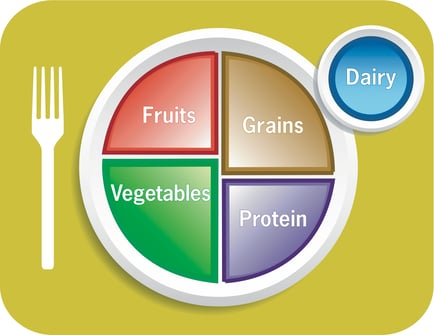
While encouraging a healthy exercise regimen is important to your health, mixing in a balanced diet will give you a complete active lifestyle. Everyone has their own ideas about what works best for their body but for those who need a starting point, take a look at USDA’s My Plate. Over the course of the last century, the USDA has been developing guidelines to specify American’s daily food intake for an ideal healthy life. The food pyramid was designed to show Americans a hearty balanced diet with suggested food groups and serving sizes. The diagrams have changed drastically over time, changing food groups and serving sizes. Today, we reference My Plate, developed by the USDA and Michelle Obama.
Let’s take a look at how they’ve changed over time:
In 1943, the USDA released “The Basic 7” which covered seven food groups, all evenly divided (pictured below). The Basic 7 did not include number of daily servings and the group categories were interestingly devised, to put it nicely.
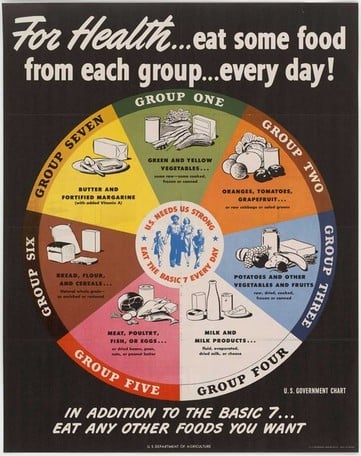
After The Basic 7 came The Basic 4, which ran from 1956 until 1992. The Basic 4 was designed similar to the chart above and included 1) meats, poultry, fish, eggs, beans, 2) dairy products, 3) grains and 4) fruits and vegetables. In 1992, the USDA released the first food pyramid (below). With this installment, the USDA recognized not all food groups should be consumed equally. While there is too much emphasis on carbohydrates and not enough on fats (good fats), this was still an improvement.
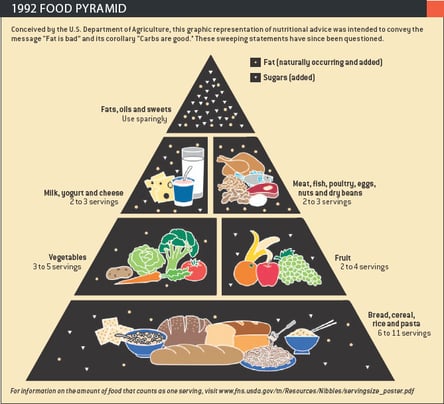
In 2005 another update was made to the triangle (below). This guide was intended to help people based on their age, gender as well as physical activity. This pyramid noticed that there needed to be good fats in everyone’s diet and helped people try to choose which ones are beneficial. Still, not perfect.
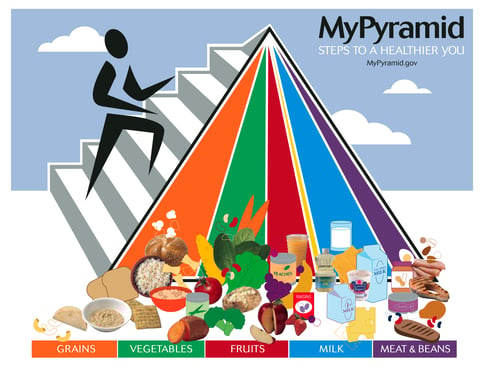
The latest update to the USDA’s food intake guidelines is My Plate (below). Developed with Michelle Obama, My Plate was designed with the intent to make customers think about building a healthy plate and possibly help beat the obesity epidemic. While this is ideal, My Plate is not perfect for everyone, especially with allergies to gluten are on the rise, causing people to cut out grains containing wheat. They’ve also eliminated the oils and fats section which is not realistic, especially since the coconut oil craze. Some of these changes have allowed people to incorporate tofu into their diet more easily, giving vegetarians more options. The suggestion to lower saturated fats has always stayed the same over the years.
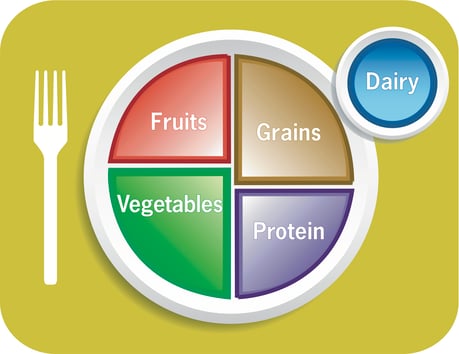
The USDA has made many advancements over time, adjusting the table as new information has become available. Today’s recommendations suggest that people should eat less because compared to other countries, Americans eat too much, too much fats, oils and empty calories. It does, however, suggest eating more whole grains, fruits and vegetables.
To see more earlier editions of the food guides, check out this article on The Huffington Post.
You may also enjoy reading: Healthy Substituions: Pasta


